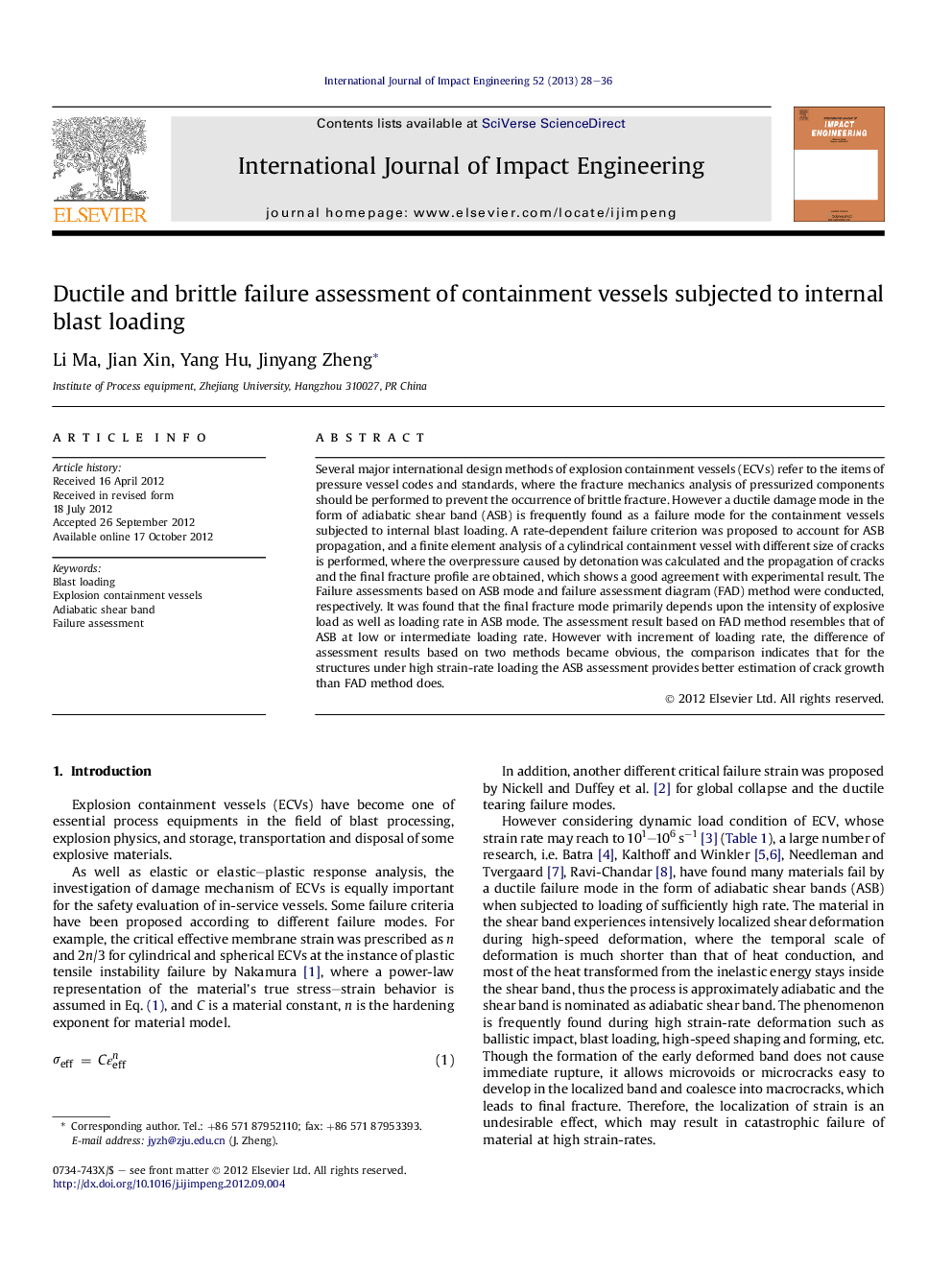| Article ID | Journal | Published Year | Pages | File Type |
|---|---|---|---|---|
| 776770 | International Journal of Impact Engineering | 2013 | 9 Pages |
Several major international design methods of explosion containment vessels (ECVs) refer to the items of pressure vessel codes and standards, where the fracture mechanics analysis of pressurized components should be performed to prevent the occurrence of brittle fracture. However a ductile damage mode in the form of adiabatic shear band (ASB) is frequently found as a failure mode for the containment vessels subjected to internal blast loading. A rate-dependent failure criterion was proposed to account for ASB propagation, and a finite element analysis of a cylindrical containment vessel with different size of cracks is performed, where the overpressure caused by detonation was calculated and the propagation of cracks and the final fracture profile are obtained, which shows a good agreement with experimental result. The Failure assessments based on ASB mode and failure assessment diagram (FAD) method were conducted, respectively. It was found that the final fracture mode primarily depends upon the intensity of explosive load as well as loading rate in ASB mode. The assessment result based on FAD method resembles that of ASB at low or intermediate loading rate. However with increment of loading rate, the difference of assessment results based on two methods became obvious, the comparison indicates that for the structures under high strain-rate loading the ASB assessment provides better estimation of crack growth than FAD method does.
► A rate-dependent failure criterion is proposed to account for crack propagation in a ductile failure mode. ► The finial fracture mode is found primarily depend upon the intensity of explosive load as well as strain rate. ► The assessment result based on FAD method resembles that of ASB at low or intermediate loading rate. ► With increment of loading rate, the difference between ductile and brittle failure assessments became obvious. ► The ASB assessment provides better estimation of crack growth than FAD method for high velocity loaded structures.
